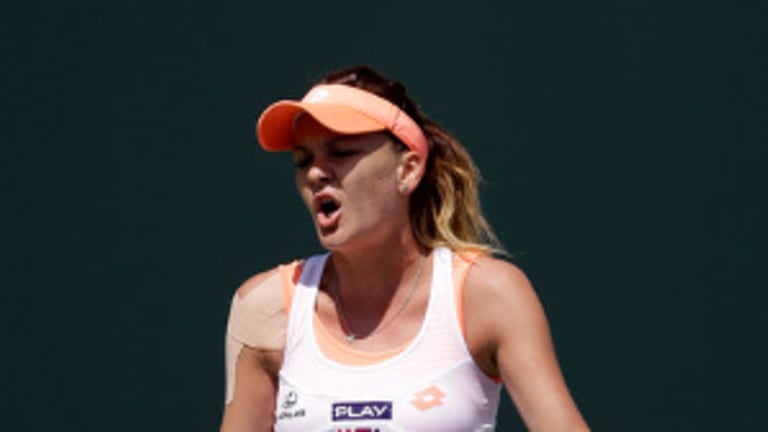Serena Williams laid down the law once again in Miami a few days ago, but her loss the other evening in Charleston must leave many observers wondering just how much longer the 32-year-old, 17-time Grand Slam champion can continue to impose some sort of order on the WTA tour.
Now, this isn’t the same as saying that Williams is in decline, or that she won’t win another half-dozen majors, nor any of the other things defensive fans of Serena might read into that first paragraph. I introduced the issue partly because of what Williams herself said after her unexpected loss to Jana Cepelova: “I'm really just dead. I need some weeks off where I don't think about tennis and kind of regroup. I've had a long couple of years, and I'm really a little fatigued.”
That’s an interesting (and, to many, almost alarming) declaration from a woman who’s played just 18 matches in four tournaments three full months into the year, and a player who had close to a full month off before the start of the Miami tournament that she won again on Sunday. As volatile as the WTA game the game has become, the absence of Williams—should she decide to cut back on her pre-Roland Garros schedule—could unleash chaos.
For weeks now, I’ve been working with the theme that we may be in the midst of a transition, at least below the Top 5 level, on the ATP tour. But things seem, if anything, even more unpredictable in the WTA, not least because there’s really only one bankable player on hand: Serena Williams.
At Indian Wells about three weeks ago, not a single quarterfinalist from 2013 returned to that round (Serena skipped the event, as she always does, both of those years). That’s pretty amazing. Last week in Miami, the pecking order was somewhat stabilized, as four of last year’s quarterfinalists repeated their performance. Of course, Williams played—and won—in both 2013 and this year, which was a big boost for the status quo. But just three quarterfinalists from Indian Wells made the same round in Miami: Li Na, Agnieszka Radwanska, and Dominika Cibulkova.
Six of the top eight seeds in Miami made the quarters (the two women who surpassed official expectations were No. 10 seed Cibulkova and No. 11 Caroline Wozniacki), which suggests a measure of stability. But there are interesting caveats or question marks that can be attached to every last one of them.
Serena’s credentials are impeccable, but there is that age and fatigue issue. Going by her own testimony, you have to wonder how she’ll handle the end of spring and summer.
The No. 2 seed in Miami was Li. She’s the same age as Williams, but she’s never been nearly the same, reliable competitor. Would anyone really be shocked if she suddenly went through one of her periodic dark periods and couldn’t sustain her pace?
